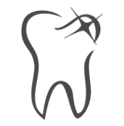
VISITING HOURS:
Week Days - 9 am to 8 pmSundays - Only Emergency Cases
How Do Missing Teeth Change Your Face Shape?
A confident and healthy smile amplifies one's appeal and self-assurance, particularly in public settings. A missing tooth causes the jawbone to gradually recede, which reduces the support that the face receives which may alter your face's appearance. When we lose our teeth, our face might start to sink in, making our cheeks look sunken and droopy, which can make us seem older. When we lose our teeth, facial changes might begin to manifest, resulting in sunken or sagging cheeks, which can make us appear older than we are. The issue with losing teeth is not limited to an aged face look, however. Loss of teeth also affects one's way of living. People find it difficult to speak, chew, or smile when their teeth are not fully supported. Fortunately, there are ways to preserve and restore the natural contours of your face. Let us look more into how missing teeth change your face shape.
How Missing Teeth Can Change the Facial Structure?
Missing teeth can indeed have a significant impact on facial structure. It will significantly impact the daily life of a person by affecting chewing, speech, confidence, and overall well-being. Here are some examples of how missing teeth change your face shape:
Sagging jowls: The misalignment of some jawbones causes the muscle ligaments to weaken, causing the facial tissue to droop around the mouth and cheeks. This can contribute to the appearance of wrinkles and folds, making the face look older.
Changes in Bite Pattern: This can indirectly affect the shape of your face. A tooth gap causes nearby teeth to move their position to compensate for the gap this will result in misalignment of the bite pattern. changes in the bite pattern can contribute to alterations in the overall shape and symmetry of the face.
Change in Chin Shape: Missing teeth can affect the alignment of the jaw, and may cause the chin to slide forward, giving the appearance of being pointed.
Thinning Lips: Lips can appear thin if there are no teeth to support their full appearance. Furthermore, lengthy lips might give the impression of ageing due to weakening muscles surrounding the mouth and misaligned teeth.
Facial Angles: The height of the jawbone is also lost when teeth are misaligned. As a result, the facial height is also lowered. Angle changes can alter the curve of the face and provide the appearance of larger noses.
Tooth Replacement Options
There are several choices for replacing missing teeth, such as dental bridges, dental implants, and dentures, regardless of the number of missing teeth. Some of them are given below:
Dental Implants
A dental implant is the best option you can choose for replacing missing teeth. Rather than conventional tooth relacing methods, they only restore the teeth that are visible above the gum line. Bone density plays a major role in maintaining facial structure, preventing the sunken appearance often associated with missing teeth. Dental implants, prevent bone loss in the jaw by mimicking natural tooth roots. To a root, a titanium post is surgically inserted into the jaw. It will promote the creation of new bones to maintain the strength and health of your jaw. Through osseointegration, the implant fuses with the jawbone, providing a stable foundation for the replacement tooth.
Also Read: How do Dental Implants Work and What are Their Benefits?
Dental Bridges
Patients who have a missing tooth between two or more decaying teeth in a row may consider getting a dental bridge. With this option, there are two dental crowns separated by artificial teeth. On either side of the gap, the crowns are affixed to the neighbouring natural teeth. This technique keeps neighbouring teeth from shifting and prevents food from getting caught in the gap, but it does not shield the jawbone from degeneration.
Zygomatic Implants
Replacing lost teeth becomes increasingly difficult the more your jawbone weakens and atrophies. For both dental bridges and implants to function properly, a specific level of bone density is needed. You might need to use bone grafts to repair your jawbone if you don't have enough bone to take advantage of these choices. If your bone density is insufficient to support traditional dental implants, you may still be able to receive alternative treatments. For example, zygomatic implants, which are anchored in the cheekbone as opposed to the jawbone, may be a viable option for you.
Conclusion
Losing teeth can cause progressive deterioration of the bones, but the structural alterations to your face are irreversible. Additionally, having sunken areas of your face can negatively impact your relationships, confidence, and power while speaking about subjects. It's essential to visit a dentist as soon as possible and go over your treatment alternatives rather than assuming that your face won't change. The easiest method to preserve your smile is to take care of the issue with the best dental treatment before the bone atrophies.
OUR
TREATMENTS
TREATMENTS








